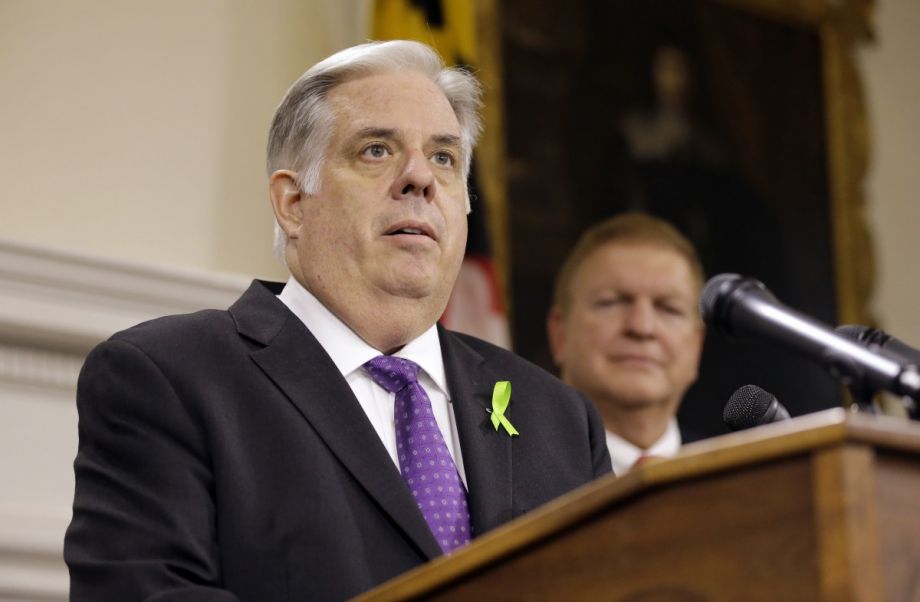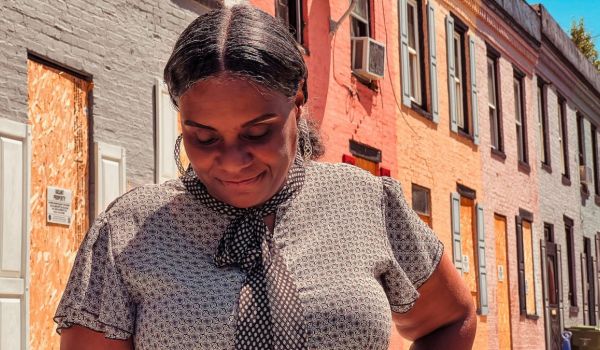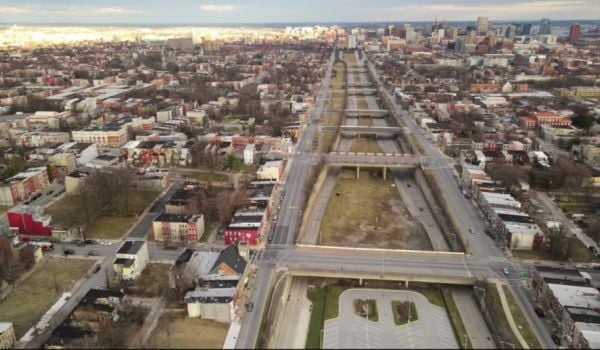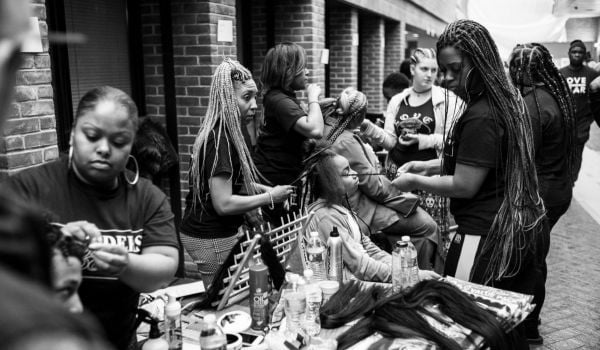Right now, civic and business leaders in Baltimore are seeing red.
Just about everyone there, including Mayor Stephanie Rawlings-Blake, Baltimore County Executive Kevin Kamenetz, the Greater Baltimore Committee and the editorial board of the Baltimore Sun is furious at Maryland Gov. Larry Hogan for pulling the plug on the Red Line, a 14.1-mile, $2.9 billion east-west light-rail line that has been in the works since 2002.
All of the people and groups listed above blasted the Governor for throwing away $900 million in federal funds that were certain to go to the project along with tens of millions the state has already spent on planning the line. They also criticized him for taking off the table a transit route that would have brought economic development, jobs and improved job access to impoverished West Baltimore.
By contrast, similar arguments helped sway both Hogan and his transportation secretary, Pete K. Rahn, to press on with the Purple Line, an east-west light-rail line serving Montgomery and Prince George’s counties outside Washington. The only change in that project will be a steep cut in the state’s contribution to its projected $2.45 billion price tag, a figure Hogan expects to be trimmed. The state will contribute $168 million to the Purple Line’s cost, down from nearly $700 million, with Montgomery and Prince George’s expected to make up the difference.
Keeping a campaign promise, Hogan is shifting the money the state will not spend on the two rail lines to highway construction and maintenance: Where Hogan’s predecessor, Martin O’Malley, allocated 45 percent of the state’s transportation budget to roads, Hogan will devote 57 percent to roads. (O’Malley and the Baltimore officials are Democrats; Hogan is a Republican.)
In its editorial criticizing the decision, the Sun went so far as to suggest Hogan was waging a “war on Baltimore” when the Red Line decision is combined with cuts in state aid to Baltimore City schools. The Governor’s release of a transportation map touting “infrastructure improvements to every single county in Maryland” that had a hole where Baltimore City should be didn’t help matters any either. (Baltimore City is independent of any county in Maryland.)
The difference between a yes for the Purple Line and a no for the Red Line hinged on a subway tunnel included in the latter project. Included to improve running time through downtown Baltimore, the tunnel accounted for nearly half the project’s total cost: $1.5 billion, according to figures published in a Baltimore Brew article agreeing with the governor’s decision.
Something other than cost, however, may have contributed to the Red Line’s demise, and the Sun’s news report on the decision provides a hint.
The article notes that, “Baltimore has long been handicapped by a transit system that many residents regard as second-rate — with a subway system consisting of a single line and a north-south light-rail line that slows to a crawl as it makes its way through downtown on Howard Street.”
Both the subway and the light-rail line are the products of earlier eras of federal transit construction assistance, and they betray a lack of comprehensive thought or planning for mass transit in Maryland’s principal city.
Where its Northeast Corridor rivals all produced comprehensive, citywide or regionwide plans for mass transit service and expansion during the 20th century, there appears to be no such evidence of similar planning in Baltimore. The subway was envisioned as a starter line for what would become a network of lines at a time when the feds were supporting the construction of “heavy rail” systems in Washington, the San Francisco Bay area and Atlanta, but while Baltimore sought and got assistance for its first subway line, there was no attempt to secure a funding commitment for a metropolitan-wide system along the lines of BART, MARTA or the Washington Metro.
Between that first line and whatever might follow, thinking at the federal level changed. What changed it was the success of San Diego’s Tijuana Trolley light-rail line from downtown to the Mexican border. As the light-rail line proved extremely cost-effective, the feds shifted their funding emphasis to light-rail projects. It was during this period that Baltimore pursued and got funding for its Central Light Rail Line, which has no direct connection to the subway. Its slow crawl through downtown replicates the troubles that led Boston to construct the nation’s first subway in 1895 and Pittsburgh to move its trolleys underground in its downtown around the time the Central Light Rail Line opened.
The lesson of the first light-rail line led Baltimore officials to include the subway section in the second. Its route, however, closely parallels that of the Metro subway extension eastward from the Inner Harbor. The Federal Transit Administration did find this line met its cost-effectiveness criteria, but critics argued that better transit service could be had at less cost, an argument Hogan bought.
Should Baltimore officials decide to try again for east-west rapid transit, it’s quite possible that what would get built is bus rapid transit, the current flavor of the month in mass transit. And for it to provide effective service through downtown, it would likely have to be routed to the north edge of downtown along a major cross street such as North Avenue.
Might Baltimore have gotten more and better transit if its electeds had thought comprehensively back when the idea to build the Baltimore Metro first surfaced? It’s hard to say, for another factor that makes transit planning in Baltimore different from that in the other big Northeast cities is that the State of Maryland runs the mass transit system directly. But it does suggest that all involved in improving the quality of transit in Baltimore, from Gov. Hogan on down to the residents of the West Side, should get together in a room and consider the big picture instead of taking the piecemeal approach.
The Works is made possible with the support of the Surdna Foundation.

Next City contributor Sandy Smith is the home and real estate editor at Philadelphia magazine. Over the years, his work has appeared in Hidden City Philadelphia, the Philadelphia Inquirer and other local and regional publications. His interest in cities stretches back to his youth in Kansas City, and his career in journalism and media relations extends back that far as well.
Follow Sandy .(JavaScript must be enabled to view this email address)

















